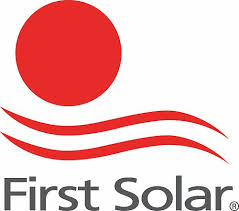First Solar is reconsidering its future investment in renewable energy in Australia because of the uncertainty on the government’s renewable energy target. This is significant because this company is one of the leaders in the Australian solar power industry. Currently, it is building the southern hemisphere’s largest solar plant, in the far west of New South Wales. The project was commissioned by energy provider AGL, and costs a massive $450 million. If completed, the solar plant can provide electricity to 50,000 households. But now, it is up in the air. Jack Curtis, Vice President of First Solar says that much has changed in the eight months since the former federal government announced the revisions in the renewable energy target.
“These projects…reached financial close in a different political and business environment which was almost a year ago now,” Curtis said. “That’s obviously changed quite dramatically since the election. There’s now a much greater deal of uncertainty around future projects like this,” he lamented.
The Coalition’s impact on renewable energy industry
Curtis proffers the idea that this is partly caused by the Coalition Government’s review of the RET, which, at present hopes to get clean energy sources to supply 20 per cent of Australia’s electricity requirement by 2020.
The unintended result of the Coalition review is that the investment in renewable energy in Australia dropped below that of developing countries such as Myanmar, Thailand and Algeria.
The solar energy sector was effectively paralyzed by this RET revision move of the Coalition government. Figures show that only around $193 million were invested in large-scale clean energy projects in the third quarter of 2014.
Australia’s investment into renewable energy
The total investments during the year, to date, according to Bloomberg New Energy Finance is only around $238 million. This shows a reduction of 70% on investments compared to the figures gathered in 2013.
As a result, Australia slipped down from the world’s 11th largest clean energy investor to 31st in 2014. The country is now even under the abovementioned third world countries with regards to renewable energy investments.
Bloomberg attributes this situation squarely with the Coalition government’s review of the RET. The RET mandates that 41,000 gigawatt hours of the country’s energy should come from renewable sources by 2020.
Previously, many industry insiders prognosticated that the proposal to cut the target to a ‘real’ 20 per cent level would decimate the clean energy industry. They cited a study which found that this move would lead to many projects and companies becoming financially stressed, and billions of dollars in lost investment, and thousands of jobs axed.
“We are already about 40 per cent of the way to meeting the legislated 41,000 gigawatt-hours of large-scale generation. If we were to reduce this target to a ‘real’ 20 per cent, it would actually mean a cut of almost two thirds of the additional large-scale renewable energy required to be built,” emphasized Kan Thornton, acting chief of CEC.
If only the Coalition government has heeded these warnings, investments in renewable energy will not suffer this massive slide down to oblivion.
SolarLink South Coast is a solar power technology installation company that services ACT and Southern New South Wales. Solarlink South Coast provide industry-quality solar systems at competitive prices. Learn more about the services SolarLink South Coast offer to their customers on their website.
